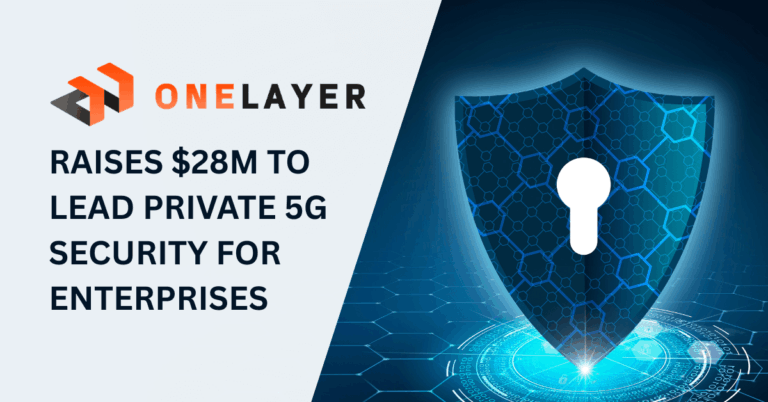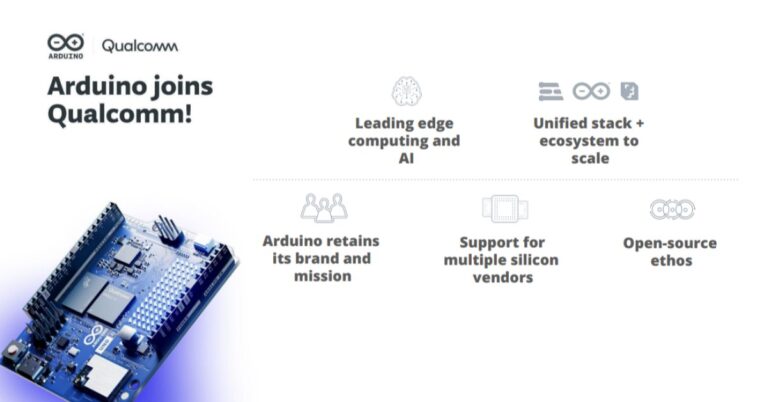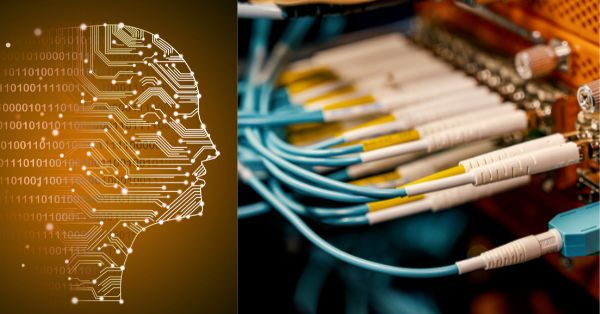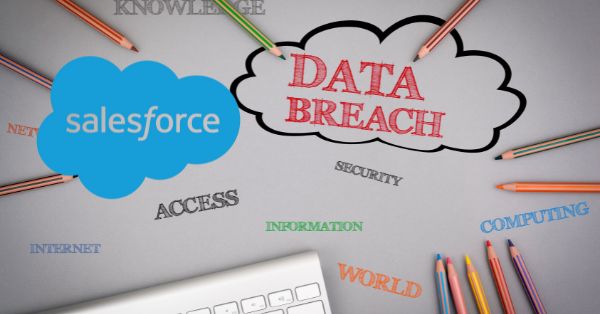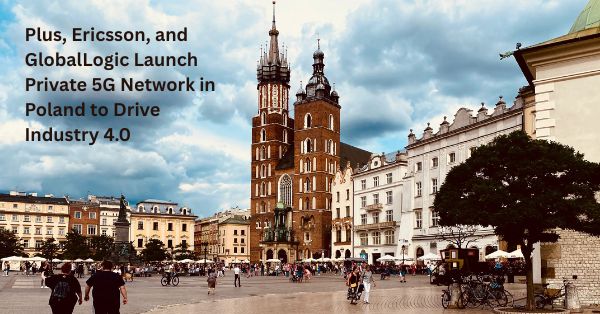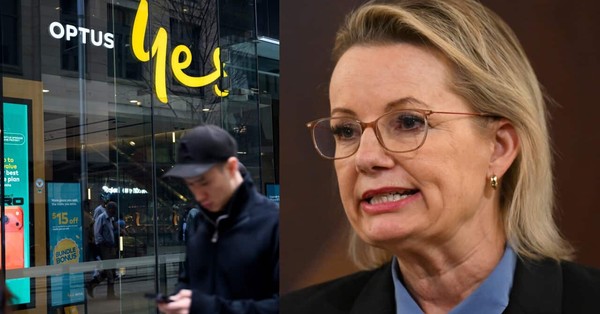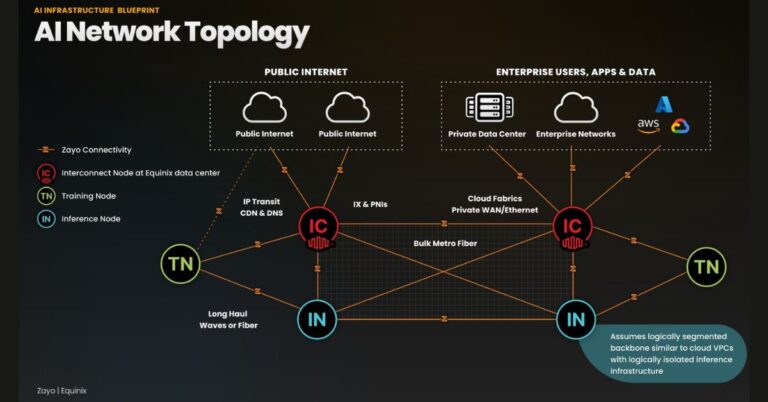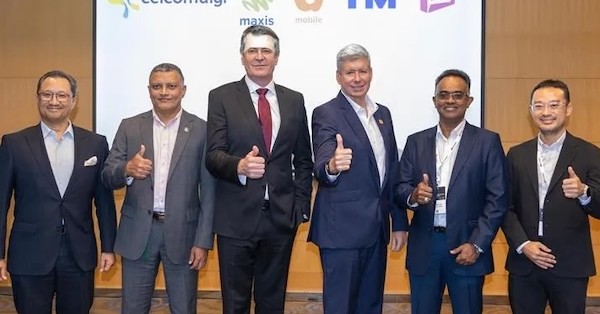Tech News & Insight
Apple’s new M5 chip is a material step in local AI compute that will ripple into enterprise IT, developer tooling, and edge networking strategies. M5 is built on a third‑generation 3‑nanometer process and reworks Apple’s GPU as the center of gravity for AI. The 10‑core GPU adds a dedicated Neural Accelerator in every core, pushing peak GPU compute for AI to more than four times M4. Unified memory bandwidth jumps to 153 GB/s, and configurations with up to 32 GB allow more and larger models to remain entirely on device. On‑device inference is moving from nice‑to‑have to default, driven by privacy, latency, and cost.
Tech News & Insight
The U.S. Federal Communications Commission (FCC) has opened a proceeding to revoke HKT International’s Section 214 authorizations, citing national security concerns tied to its affiliations and the evolving U.S.–China risk posture. Section 214 authority is the gatekeeper for carriers to originate, terminate, or carry traffic that touches the U.S., including wholesale voice, IP transit, subsea capacity backhaul, and certain enterprise connectivity. Over the past five years, the FCC—often in coordination with the interagency “Team Telecom” group (DOJ, DHS, DOD)—has revoked or denied comparable permissions for China Telecom (Americas), China Unicom (Americas), and Pacific Networks/ComNet, among others, after similar “order to show cause” phases. The next 60–120 days could reshape interconnection routes, roaming relationships, and wholesale arrangements touching Hong Kong-to-U.S. traffic paths.
Tech News & Insight
OneLayer, a Boston-based private network security provider, raised $28M in Series A funding to meet surging enterprise demand for secure private cellular networks. With 6× revenue growth and deployments across 122,000 sq mi, the company enables IT-grade visibility and zero-trust enforcement for critical infrastructure, utilities, and manufacturers scaling private 5G.
Tech News & Insight
AT&T 1 offers up to $5,000 for documented, incident-related losses, or a tiered cash payment if you don’t submit documentation; whether a Social Security number was involved may affect the tier. AT&T 2 offers up to $2,500 for documented, incident-related losses, or a proportional cash payment without documentation. If you qualify for both incidents and have separate documentation for each, the combined cap could reach $7,500. Actual amounts depend on the total number of valid claims and settlement costs, and funds will not be distributed until after final court approval.
- 5G, Automation, FWA, IoT, Security
Tech News & Insight
Verizon has entered a definitive agreement to acquire Starry, a fixed wireless broadband specialist focused on MDUs across Boston, New York, Los Angeles, Denver, and Washington, D.C. Starry brings nearly 100,000 broadband customers and an MDU-centric network architecture built around wideband millimeter-wave and hybrid fiber. Verizon said the move will support its ambition to double fixed wireless subscribers to roughly 8–9 million by 2028 and extend availability to about 90 million households. Starry’s in-market MDU know-how and neutral-host friendly building relationships give Verizon a fast path to scale in cities where it already owns substantial fiber backhaul and large 28/39 GHz mmWave holdings.
Tech News & Insight
Qualcomm is acquiring Arduino to anchor an end-to-end developer funnel from hobbyist prototypes to commercial robots and industrial IoT systems. As part of the announcement, Arduino introduced the Uno Q, a new board priced around $45–$55 featuring Qualcomm’s Dragonwing QRB2210 processor that runs Linux alongside Arduino tooling and supports vision workloads. By meeting developers at the prototyping bench and offering an upgrade path to production-grade SoCs and modules, Qualcomm aims to convert experimentation into long-term silicon design wins. The Arduino tie-up broadens access to Qualcomm compute for small teams while reinforcing an ecosystem play that spans on-device AI, connectivity, and lifecycle operations at the edge.
Tech News & Insight
The new AT&T IoT Marketplace turns complex IoT procurement and lifecycle management into a catalog-driven digital experience that aims to speed revenue and reduce operational friction for enterprises and partners. AT&T, working with Ericsson, introduced a digital eCommerce platform that unifies how IoT services are discovered, configured, contracted, provisioned, and billed. The Marketplace is powered by Ericsson’s Digital Experience Platform alongside its Catalogue Manager and Order Care components. AT&T reports it has cut the time it takes to order certain fleet management services from hours to minutes, an indicator of the step-change in operational efficiency the Marketplace is designed to deliver.
Tech News & Insight
Sweden’s largest passenger rail operator SJ is consolidating its communications estate with Telia to accelerate 5G, IoT, and crisis-readiness across trains, stations, depots, and corporate operations. The partnership positions Telia as SJ’s primary provider for nationwide mobile and fixed communications, combining public 5G/LTE coverage with managed services that support day‑to‑day rail operations and passenger experience. For passengers, more consistent Wi‑Fi backhaul and seamless digital services are the immediate wins; for operations, the prize is reliability and faster recovery when incidents occur. European operators are scaling beyond discrete connectivity pilots toward platforms that unify onboard systems, station sensors, and back‑office analytics.
Tech News & Insight
Vodafone Idea (Vi) used India Mobile Congress 2025 to unveil Vi Protect, a network-integrated, AI-powered security suite aimed at stopping spam calls, fraudulent messages, and fast-moving cyber threats for both consumers and businesses. By moving detection into the network rather than relying on over-the-top apps, Vi is positioning security as a core service-level capability with lower latency, broader coverage, and tighter control. Unlike app-only caller ID and spam filtering, Vi Protect runs at the DNS, SMS, and voice gateway layers, combining AI models, web crawlers, and subscriber feedback loops. The operator says its systems have already intercepted more than 600 million scam and spam attempts.
- 5G, AI, Automation
Tech News & Insight
Nokia and du completed a production-style trial that applied classical and generative AI to accelerate optical network planning and day-to-day operations. The partners tested Nokia’s WaveSuite AI, an automation assistant that exposes network intelligence through a natural-language interface. du cited faster troubleshooting, fewer errors in routine changes, and better resource utilization. The operator also reported concrete planning gains: roughly half the time to develop optical plans and about 30% greater efficiency in network designs, which translates to less overbuild and faster time-to-market. The net effect is improved service delivery and a smoother experience for operations teams tasked with meeting strict SLAs.
Tech News & Insight
AT&T has gone live on Boldyn Networks’ neutral-host infrastructure in New York’s Joralemon Street tunnel, with G line tunnel segments next in the rollout. AT&T customers can now access 5G mobile service through the 1.1-mile (1.8 km) Joralemon Street tunnel, the oldest underwater subway tunnel in New York City, which links the 4/5 lines between Borough Hall in Brooklyn and Bowling Green in Manhattan. Subway connectivity has shifted from convenience to critical infrastructure for safety, accessibility, and productivity. AT&T’s first-mover status sets a competitive benchmark; other national carriers (Verizon and T‑Mobile) are expected to follow as on-boarding progresses across the system.
Tech News & Insight
Deutsche Telekom has launched a first in Europe: seamless eSIM profile transfers across Android and iOS, removing long-standing friction when customers switch devices or platforms. Customers on Deutsche Telekom can now move their mobile subscription as an eSIM from Android to iOS and vice versa without a carrier app, QR code, or paperwork. The transfer process is initiated in the settings of the new device and handled natively by the operating system, which detects the previous phone and orchestrates the migration. Deutsche Telekom validates device, tariff, and user eligibility in the background, then authorizes the transfer, preserving the phone number and plan.
Usecase
Airbus has partnered with Ericsson to deploy private 5G networks at its Hamburg and Toulouse factories, transforming operations through secure, low-latency connectivity. The rollout supports AR, predictive maintenance, and IoT-driven smart manufacturing, setting a scalable model for global digital transformation.
Tech News & Insight
OpenAI has acquired Roi, a New York–based personal finance startup founded in 2022 that built an AI companion to aggregate and advise on a user’s full financial footprint across stocks, crypto, DeFi, real estate, and NFTs. The move extends a year of acqui-hires at OpenAI, following Context.ai, Crossing Minds, and Alex. Personalization is becoming the moat for AI consumer products. Models are converging in capability, so durable advantage shifts to data, context, and engagement design. OpenAI’s Roi acqui-hire is less about a finance app and more about owning the personalization layer across consumer AI.
Tech News & Insight
A sprawling social engineering campaign tied to the Lapsus$/Scattered Spider/ShinyHunters ecosystem is extorting enterprises after allegedly siphoning close to a billion records from Salesforce customer environments. Attackers claim broad theft of personally identifiable information from organizations that use Salesforce, while the vendor states its core platform and code were not breached. Evidence points to identity-led social engineering, followed by misuse of sanctioned tools and APIs to quietly extract large data volumes. For telecom and enterprise IT, CRM data now sits on the front line of extortion economics, raising urgent questions about identity controls, SaaS hardening, and third-party risk.
Usecase
GlobalLogic, in collaboration with Plus and Ericsson, has launched an independent private 5G network at its Kraków campus. This initiative marks a major step in accelerating Industry 4.0 in Poland, enabling real-time AI analytics, secure video surveillance, and intelligent asset management through low-latency, high-reliability 5G infrastructure tailored for industrial use cases.
Tech News & Insight
California has enacted SB 53, a first-of-its-kind AI safety law aimed at large model developers, with ripple effects for enterprises that build, buy, or operate AI at scale. SB 53 targets “frontier” AI developers—think OpenAI, Anthropic, Meta, and Google DeepMind—requiring public transparency on how they apply national and international standards and industry best practices. It institutionalizes safety incident reporting to California’s Office of Emergency Services and extends protections for whistleblowers who surface material risks. The California Department of Technology will recommend updates annually, ensuring the regime evolves with the tech.
Tech News & Insight
ChatGPT users in the U.S. can now buy from Etsy sellers without leaving the conversation, with more than a million Shopify merchants “coming soon.” The feature, called Instant Checkout, is available to logged-in Free, Plus, and Pro users. It supports Apple Pay, Google Pay, Stripe, and credit cards. The flow is simple: ask for ideas, get curated products with images, prices, and reviews, tap Buy, confirm shipping and payment, and the merchant fulfills the order using its existing systems. Brands like Glossier, Skims, Spanx, and Vuori are expected to be part of the broader Shopify rollout.
Tech News & Insight
South Korea is funding a national AI stack to reduce dependence on foreign models, protect data, and tune AI to its language and industries. The government has committed ₩530 billion (about $390 million) to five companies building large-scale foundation models: LG AI Research, SK Telecom, Naver Cloud, NC AI, and Upstage. Progress will be reviewed every six months, with underperformers cut and resources concentrated on the strongest until two leaders remain. The policy goal is clear: build world-class, Korean-first AI capability that supports national security, economic competitiveness, and data sovereignty. For telecoms and enterprise IT, this is a shift from “consume global models” to “operate domestic AI platforms” integrated with local data, compliance, and services.
Tech News & Insight
A second emergency call disruption in as many weeks has escalated questions about Optus’ operational controls and the resilience of Australia’s emergency communications ecosystem. Optus reported that a fault tied to a mobile tower in Dapto, Wollongong, left around 4,500 users affected between 3:00 a.m. and 12:20 p.m. on Sunday, with nine Triple Zero attempts failing during that window. While the scope was geographically contained, the event compounds a pattern that now includes multiple emergency call failures across two weeks. Repeated emergency call failures undermine public trust and expose systemic weaknesses in how operators design, test, and govern safety-critical services.
Tech News & Insight
Two narratives are converging: Silicon Valley’s rush to add gigawatts of AI capacity and a quiet revival of bunkers, mines, and mountains as ultra-resilient data hubs. Recent headlines point to unprecedented AI infrastructure spending tied to OpenAI. The draw is physical security, thermal stability, data sovereignty, and a narrative of longevity in an era where outages and cyber‑physical risks are rising. Geopolitics, regulation, and escalating outage impact are reshaping site selection and architectural choices. The AI build‑out collides with grid interconnection queues, water scarcity, and rising scrutiny of carbon and noise. Set hard thresholds on PUE and WUE; require real‑time telemetry and third‑party assurance.
Usecase
Boldyn Networks and O2 have upgraded AO Arena Manchester with a cutting-edge neutral host 5G DAS. Designed to support over a million annual attendees, the shared infrastructure enhances livestreaming, digital ticketing, and real-time services. The rollout delivers seamless mobile performance for fans, vendors, and staff, setting a new standard for large venue connectivity in the UK.
Tech News & Insight
AI now depends as much on the network and interconnection layer as it does on GPUs, and this blueprint turns that reality into a repeatable design. Training has concentrated in a few massive regions, while inference is exploding at the edge and in enterprise colocation sites, creating a scale challenge the industry hasn’t codified until now. Zayo and Equinix are proposing a common model that aligns high-capacity transport, neutral interconnection hubs, and specialized training and inference data centers. The aim is to shorten time to market for AI services by providing reference designs that reduce trial-and-error across L1–L3, interconnection, and traffic engineering.
Tech News & Insight
Malaysia’s five mobile operators will federate a GSMA Open Gateway API to give banks and online retailers a consistent, cross-network tool to fight account takeovers and digital identity theft. CelcomDigi, Maxis, U Mobile, Telekom Malaysia, and YTL Communications plan to provide federated access to the GSMA Open Gateway Number Verification API, based on the CAMARA standard. The API verifies a user’s mobile number against real-time network attributes, offering a more secure, low-friction alternative to SMS one-time passwords. Network-anchored verification provides silent, possession-based authentication that reduces user friction and closes common OTP exploits. Developers can integrate once and reach all participating Malaysian networks while each operator retains control of data, policy, and monetization.
Tech News & Insight
Databricks is adding OpenAI’s newest foundation models to its catalog for use via SQL or API, alongside previously introduced open-weight options gpt-oss 20B and 120B. Customers can now select, benchmark, and fine-tune OpenAI models directly where governed enterprise data already lives. The move raises the stakes in the race to make generative AI a first-class, governed workload inside data platforms rather than an external service tethered by integration and compliance gaps. For telecom and enterprise IT, it reduces friction for AI agents that must safely traverse customer, network, and operational data domains.



